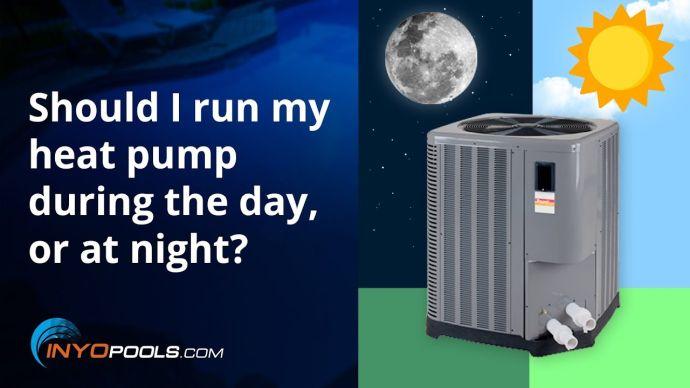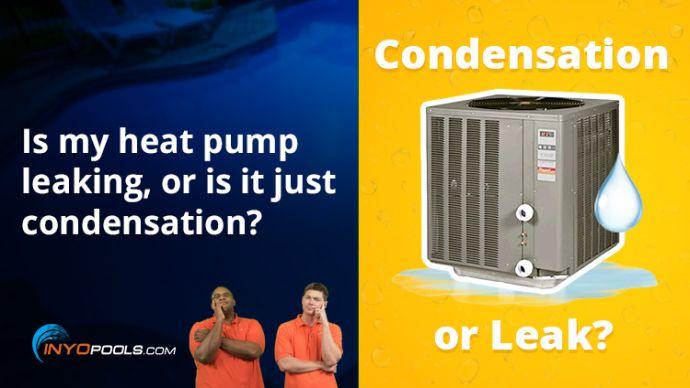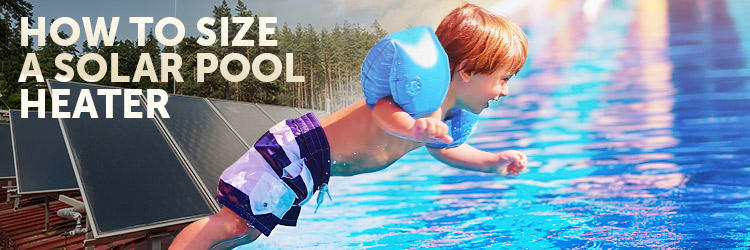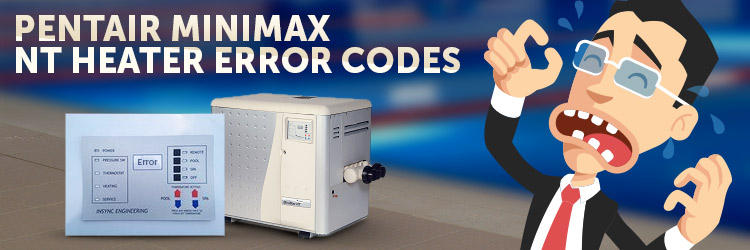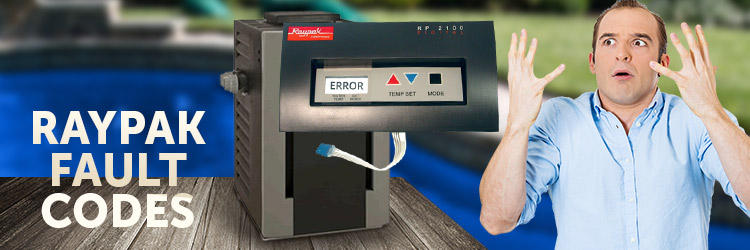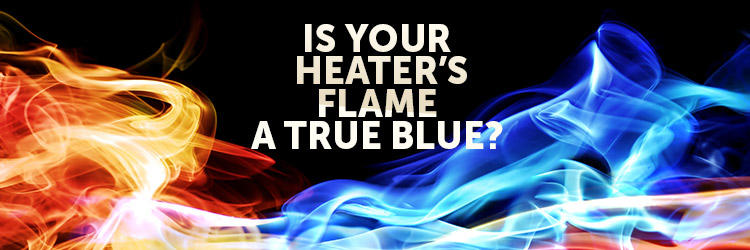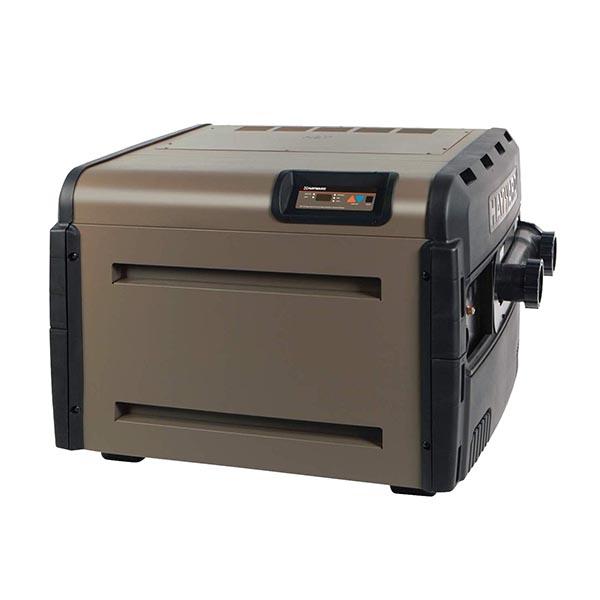
Pool Heater
Troubleshooting
Resources for fixing your heater problems.

Tip: Proper maintenance of your pool heater is crucial for efficient heating and extending its lifespan. Regularly check and clean the heater’s filters to prevent clogs and ensure optimal performance. Inspect the heat exchanger for any signs of corrosion or buildup, and ensure the water chemistry is balanced to prevent scale formation. A well-maintained pool heater provides consistent warmth for your pool, allowing you to enjoy swimming comfortably throughout the season while reducing energy costs.
Common Heater Problems
Click on a symptom that you are experiencing…
Heater Won’t Turn On
Problem:
If your pool heater won’t turn on, the issue could stem from electrical problems, gas supply issues, or safety mechanisms within the heater. Before diving into repairs, check the basics and review any displayed error codes to help identify the cause.
Action Items:
- No Power to Heater: If the heater isn’t receiving power, it won’t turn on. Check the circuit breaker and ensure it hasn’t tripped. Verify the power switch on the heater is on, and inspect for any blown fuses that may need replacing.
- Gas Supply Issues: For gas heaters, a blocked gas line or closed gas valve can prevent the heater from igniting. Check to ensure the gas valve is open and the gas line is unobstructed. If you smell gas or suspect a leak, turn off the gas immediately and contact a professional.
- Thermostat Set Too Low: Sometimes, the thermostat setting may simply be too low, causing the heater not to engage. Check the thermostat and make sure it’s set to the desired temperature above the current water temperature.
- Pilot Light or Igniter Issues (for Gas Heaters): If your heater has a pilot light, ensure it’s lit. For units with electronic ignitions, listen for clicking sounds indicating that the igniter is trying to start. If there’s no ignition, you may need to replace the igniter.
- Dirty or Clogged Filter: A clogged filter or poor water flow can prevent the heater from activating due to safety mechanisms. Clean or replace your filter and make sure the water flow meets the heater’s requirements.
- Pressure or Flow Switch Malfunction: The pressure or flow switch ensures that enough water is flowing through the heater. If this switch is faulty, it can prevent the heater from turning on. Check the switch and replace it if it’s damaged.
- Error Codes on Display: Many heaters have diagnostic codes to indicate issues. Refer to the heater’s manual for guidance on specific error codes that might be causing the problem.
Heater Turns On but Won’t Heat Water
Problem:
If your pool heater powers on but fails to heat the water, it can indicate issues such as a malfunctioning thermostat, clogged filters, or a faulty heating element. Promptly diagnosing the problem is essential to restore heating efficiency and keep your pool at a comfortable temperature.
Action Items:
- Thermostat Setting or Calibration Issues: If the thermostat is set too low or not calibrated correctly, the heater may run without effectively heating the water. Check the thermostat setting and ensure it’s above the current water temperature. If the reading seems inaccurate, recalibrate or replace the thermostat.
- Gas or Fuel Supply Issues (for Gas Heaters): Even if the heater is on, an insufficient gas supply can prevent it from heating. Make sure the gas valve is fully open, and check for blockages or leaks in the gas line. If you have a propane tank, confirm it has enough fuel.
- Broken or Dirty Heat Exchanger: The heat exchanger transfers heat from the heater to the water. If it’s clogged with debris or has mineral scaling, the water won’t heat properly. Regularly clean the exchanger and descale it if necessary.
- Low Water Flow: A pool heater requires adequate water flow to operate efficiently. Check the pool’s pump and filter to ensure they’re working well, as low water flow can reduce heating efficiency or trigger safety shutoffs. Clean or replace clogged filters, and inspect for any pump issues.
- Faulty Pressure or Flow Switch: If the heater’s flow or pressure switch isn’t detecting adequate water flow, it may stop heating as a safety precaution. Inspect the switch, and if it’s faulty, replace it to restore normal heating function.
- Ignition or Burner Issues (for Gas Heaters): If the igniter or burner is dirty or damaged, the heater may not produce enough heat. Check the burner area for any debris, and clean or replace the components as necessary.
- Broken Heating Element (for Electric Heaters): In electric heaters, a broken heating element will prevent the heater from warming the water. Inspect the heating element and replace it if needed.
- Incorrect Bypass Valve Setting: Some pool systems have a bypass valve, allowing water to skip the heater. Make sure it’s not diverting water around the heater, which would prevent proper heating.
Heater Shuts Off Before Reaching Set Temperature
Problem:
If your pool heater turns off before reaching the desired temperature, it may be due to several possible causes. This issue can range from simple thermostat malfunctions to more complex system problems. Identifying the root cause will help you resolve the issue and ensure your heater operates correctly.
Action Items:
- Overheating Protection (Thermal Cutoff): Most pool heaters have a built-in thermal cutoff switch that shuts the heater off if it detects the water temperature is too high or the system is overheating. This could happen if the water flow is insufficient, causing the heater to work harder and overheat. Ensure that the pump and filter are working properly, and check the water flow to prevent overheating.
- Clogged Filter or Pump Issues: Poor water circulation can prevent the heater from running effectively, leading to overheating. Check the pool filter for clogs and clean or replace it as needed. Make sure the pool pump is operating at the correct speed and that there’s no blockage in the pipes, ensuring adequate water flow through the heater.
- Faulty Temperature Sensor or Thermostat: A malfunctioning temperature sensor can cause the heater to shut off prematurely. If the thermostat is reading the water temperature incorrectly, it may stop the heater before it has a chance to reach the set point. Check the thermostat calibration and replace the temperature sensor if necessary.
- Gas Supply or Flame Sensor (for Gas Heaters): In gas heaters, a faulty gas supply or a malfunctioning flame sensor can cause the heater to turn off unexpectedly. Ensure the gas valve is fully open and there are no blockages in the gas line. If the flame sensor is dirty or malfunctioning, clean or replace it to allow proper combustion and heating.
- Flow Switch Malfunction: If the flow switch is faulty, it may incorrectly detect inadequate water flow and shut the heater off. Inspect the flow switch for any signs of wear or damage and replace it if necessary to restore normal operation.
- Low Pressure or Air in the System: Low water pressure or air trapped in the system can cause the heater to shut off prematurely. Check for airlocks in the system, and bleed the system if necessary. Make sure the pump is creating enough pressure to maintain adequate flow through the heater.
- Faulty High Limit Switch: The high-limit switch is a safety feature that turns the heater off if the water temperature exceeds safe levels. If this switch is malfunctioning, it may cause the heater to shut off too early. Test the switch, and replace it if it’s not functioning properly.
- Electrical Issues (for Electric Heaters): If your pool heater is electric, an issue with the heating element, circuit breaker, or electrical wiring could cause it to shut off prematurely. Check the electrical components, and ensure that all connections are secure. If necessary, replace faulty components.
Heater is Making Unusual Noises
Problem:
If your pool heater is producing unusual noises—such as banging, rattling, or hissing—it could indicate problems like loose components, air in the system, or issues with the heating element. Addressing these noises promptly is important to prevent potential damage and ensure safe operation.
Action Items:
- Check for Air in the System: Ensure the water level is correct and bleed air from the filter and pump system to eliminate gurgling or bubbling noises.
- Remove Debris: Clean the heater’s intake, exhaust, and filter to remove any debris causing unusual sounds.
- Tighten Loose Parts: Inspect and tighten any loose components, such as screws or panels, to prevent rattling or vibrating noises.
- Inspect the Fan or Pump Motor (Gas Heaters): Check the fan and pump motor for wear or damage and clean or replace them if necessary.
- Descale the Heat Exchanger: Use a cleaning solution to remove scale and mineral buildup from the heat exchanger, which can cause popping or cracking sounds.
- Monitor Expansion and Contraction Noises: Some popping or ticking sounds may be normal due to the expansion and contraction of metal parts as they heat and cool.
- Check the Flow or Pressure Switch: Test and replace faulty flow or pressure switches to prevent clicking or clunking noises.
- Inspect the Compressor or Motor (Electric Heaters): Look for issues with the compressor or motor if humming or grinding sounds persist.
- Examine the Burner or Gas Valve (Gas Heaters): Clean the burner and gas valve to fix popping, hissing, or clicking noises caused by improper gas flow.
Error Codes Displayed on Control Panel
Problem:
When your pool heater displays error codes on the control panel, it indicates specific issues that require attention. Understanding these codes is essential for diagnosing problems and ensuring your heater operates efficiently. Each manufacturer may have different codes, so consulting the owner’s manual is crucial for accurate troubleshooting.
Action Items:
- Refer to the owner’s manual: Locate the error code in your heater’s manual to understand its meaning and recommended solutions.
- Check for common issues: Some error codes may indicate problems such as low water flow, air in the system, or overheating. Verify the water flow rate and inspect for any obstructions or leaks.
- Reset the heater: In some cases, simply resetting the heater can clear temporary errors. Follow the reset procedure in the manual.
- Contact a professional: If the error persists or you are unsure how to resolve it, it’s advisable to consult a qualified technician for further diagnosis and repair.
Soot or Black Smoke from Gas Heater
Problem:
If you notice soot or black smoke coming from your gas pool heater, it indicates improper combustion, which can pose safety risks and affect heating efficiency. Common causes include blocked vents, incorrect gas pressure, or dirty burners. Addressing these issues promptly is essential to ensure safe operation and effective heating.
Action Items:
- Inspect venting systems: Check for blockages in the venting system that could restrict airflow and lead to improper combustion. Clear any debris or obstructions.
- Examine gas pressure: Verify that the gas pressure is set correctly according to the manufacturer’s specifications. If it’s too high or too low, consult a professional to adjust it.
- Clean the burners: Accumulated dirt or debris on the burners can cause incomplete combustion. Remove the burner assembly and clean it thoroughly.
- Look for leaks: Inspect gas connections for leaks that could impact combustion. If you suspect a gas leak, turn off the gas supply immediately and contact a professional.
Water Leaking from Heater
Problem:
If your pool heater is leaking water, it can indicate several issues, such as damaged seals, loose connections, or internal component failures. Addressing leaks promptly is crucial to prevent water loss and potential damage to the heater and surrounding area.
Action Items:
- Inspect for loose connections: Check all plumbing connections and fittings for any signs of looseness or wear. Tighten or replace them as necessary to stop leaks.
- Examine seals and gaskets: Over time, seals and gaskets can deteriorate. Inspect them for cracks or wear, and replace them if they are compromised.
- Check for cracks: Look for visible cracks in the heater’s housing or internal components, which may require repair or replacement.
- Verify water pressure: Excessive water pressure can cause leaks. Use a pressure gauge to check the water pressure and adjust it if necessary to meet the manufacturer’s specifications.
Inconsistent Temperature
Problem:
If your pool heater is providing inconsistent temperatures, it can be frustrating and may indicate issues such as poor water circulation, thermostat malfunctions, or problems with the heating element. Identifying and addressing these problems is essential to ensure a comfortable swimming experience.
Action Items:
- Check water circulation: Ensure that the pool pump is operating correctly and that water is flowing freely through the heater. Clean or replace any clogged filters or pumps as needed.
- Inspect the thermostat: Verify that the thermostat is functioning properly and accurately reading the water temperature. Replace it if it’s faulty or not calibrated correctly.
- Examine heating elements: For electric heaters, test the heating elements for continuity and proper function. Replace any defective elements that may be affecting heating efficiency.
- Look for air bubbles: Air trapped in the system can cause temperature fluctuations. Bleed air from the system to ensure proper circulation and heating.
- Use a solar cover to retain heat in the water when the pool is not in use.
Pool Heater Videos
Pool Heater Articles

Hayward Gas Heaters
Heat your pool with a Hayward Universal H-Series Heater
- Cupro Nickel Heat Exchangers
- Low NOx Emissions
- Propane & Natural Gas Options

